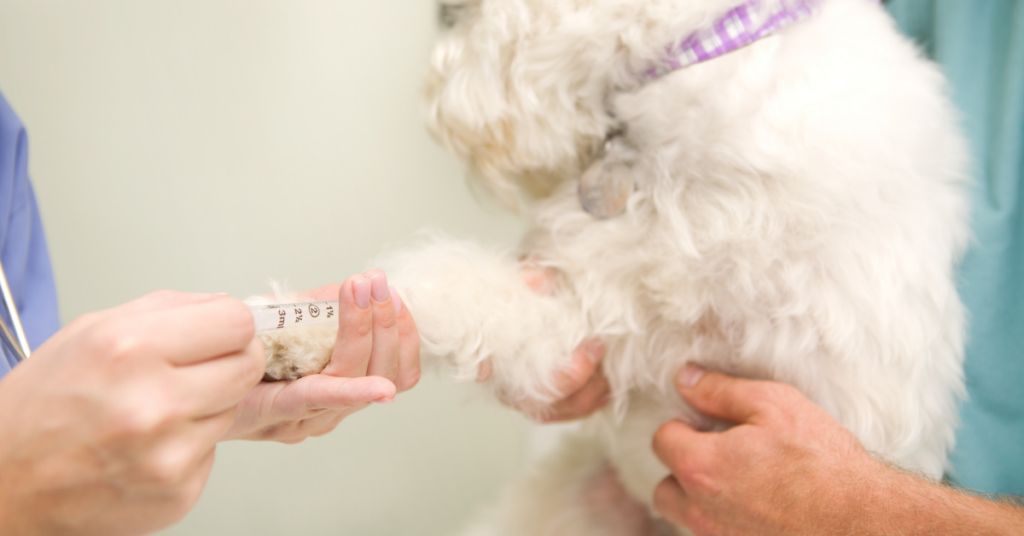Elevated Liver Enzymes in Dogs: What It Means
Reviewed by Lauren Cannon, DVM
Have you done a blood test for your dog recently? Did those tests show high liver enzymes? If so, you need to understand what that means and how it can affect your dog’s health.
A liver enzyme test is particularly tough to understand. The letters AST, ALT, ALP, and GGT will most likely appear on your dog’s test findings… What is this alphabet soup, though?
Read more to know more about elevated liver enzymes in dogs, and how it can be treated.
What is the Liver’s Function in Dogs?

The liver is one of your dog’s largest and most vital organs, conducting around 500 daily activities (in combination with other organs). Here are a handful of the liver’s main functions:
Detox
To begin with, the liver removes potentially hazardous compounds from both within and outside the body, such as medications, vaccinations, environmental pollutants, and even intestinal microorganisms.
The liver requires essential antioxidant substances and enzymes, such as glutathione, in order to detox (an important antioxidant molecule that helps prevent aging and chronic disease).
A complicated cascade of chemical processes in the liver detoxifies toxic chemicals. These enzyme activities in the liver are responsible for converting fat-soluble poisons into water-soluble compounds.
These compounds leave the body via urine or bile once they have been bio-transformed and are no longer harmful.
Storage
The liver is a storage organ that stores sugar in the form of glycogen and regulates blood sugar levels. Iron, copper, vitamins B-12, A, D, E, and K are all stored in the liver.
Production And Regulation
The liver is responsible for a variety of functions. Bile is produced to help in the digestion of lipids.
Blood proteins, clotting factors, and other chemicals necessary for the formation of red blood cells are produced.
The liver also recycles red blood cells, which transport oxygen throughout the body.
The liver also controls a variety of hormones and uses antioxidants like vitamins C and E, as well as glutathione, to neutralize free radicals created during oxidation.
Nutrient Breakdown and Absorption
The liver not only breaks down nutrients from the diet, but it also assists the body in using those nutrients in tissue formation. There isn’t a more vital organ in the body than the liver, so what does it signify when the AST, ALT, ALP, and GGT levels all start to rise?
Liver Enzymes in Dogs

AST: Aspartate transaminase (AST) is an enzyme that breaks down aspartate (formerly SGOT or serum glutamic oxaloacetic transaminase).
The liver may be the source of your dog’s increased AST, but it may also be present in red blood cells, the heart, muscle, pancreas, and bile.
If your dog’s AST is abnormally high, your veterinarian should investigate the cause. Because AST is generally low in the blood, it should be evaluated with ALT as part of a liver panel to determine what’s wrong.
ALT: Alanine aminotransferase (ALT) is an enzyme that converts amino acids into amino acids (previously called SGPT or serum glutamic pyruvic transaminase).
If it’s high, ALT measures hepatocellular damage, primarily, although it can be triggered by other conditions.Because this enzyme is produced by both the kidney and the intestines, liver issues aren’t always the main reason of increased ALT, and further investigation is necessary.
ALP: Alkaline phosphatase is present in the liver, bone, kidney, colon (intestines), and placenta (if pregnant). The bone and liver have the greatest quantities of this enzyme.
Basic phosphatase is a homodimeric enzyme that is abundant in young, fast-growing animals, hence increased ALP in young dogs is not uncommon.
However, regardless of your dog’s age, if ALP is increased, consult your veterinarian to examine the cause.
ALKP (Alkaline Phosphatase): Is located on the bile ducts and the cell membranes (outside borders) of liver cells. When bile does not flow adequately out of the liver, ALKP levels in the blood rise.
This might be because the liver is inflamed, preventing it from working properly. In young dogs, it will also rise as a result of some medicines, hormonal illnesses, and bone expansion.
GGT: Gamma glutamyl transferase is a kind of glutamyl transferase. Hepatobiliary disease (liver and bile) can be diagnosed and monitored using this enzyme.
The enzymatic biomarker of liver illness, GGT, is the most sensitive. If you’re concerned about your dog’s liver health, have your veterinarian run a panel that includes GGT.
Causes of Elevated Liver Enzymes in Dogs

Abnormal liver enzymes can be caused by medications like phenytoin and phenobarbital, as well as any other drug, including heartworm treatment and anti-inflammatory drugs, so if your dog is on any medication, your vet should always check whether that is the cause.
EDCs, or endocrine disrupting chemicals, which are abundant in the environment, are another key factor that can impact the liver. Hormones, pesticides, and herbicides are also prevalent in our drinking water and food.
Dog food can affect the dog’s liver health. Aflatoxins, which are harmful mycotoxins, can be found in kibble.
Jaundice, weight loss, and fatigue are all symptoms of aflatoxins, which primarily harm the liver… and the consequences can be deadly.
Diagnosis of Elevated Liver Enzymes in Dogs

The issue with liver enzymes is that they don’t tell us which of these factors is driving the increase. They’re good for screening, which means checking for pets who potentially have a liver disease.
If the veterinarian recognizes a probable explanation for the elevated liver enzymes, such as hyperthyroidism or poisoning, they may treat the underlying problem rather than continuing to investigate and repeating the liver test.
However, in order to work out more, more tests are frequently required. An ultrasound examination of the liver tissue or a bile acid stimulation test are two examples of these examinations (BAST).
This test determines how effectively the liver is functioning and whether it needs additional help.
A liver biopsy, in which a small quantity of liver is taken and studied under a microscope, is another technique to learn more about what’s going on in the liver.
Treatment of Elevated Liver Enzymes in Dogs

Treatment of elevated liver enzymes depends on the underlying cause. Once the vet knows what’s wrong, they can treat the issue.
In addition, following a natural lifestyle can help your dog protect this crucial organ, which aids in the detoxification of the body from our increasingly toxic environment.
You may support your dog’s liver with vitamins in addition to giving a fresh, whole food diet.
When to See a Veterinarian

If your dog’s blood tests showed elevated liver enzymes, it’s best to visit your vet to look for the underlying problem.
Because having elevated liver enzymes isn’t a diagnosis, but rather a little piece of the puzzle in figuring out what’s wrong with your dog.







